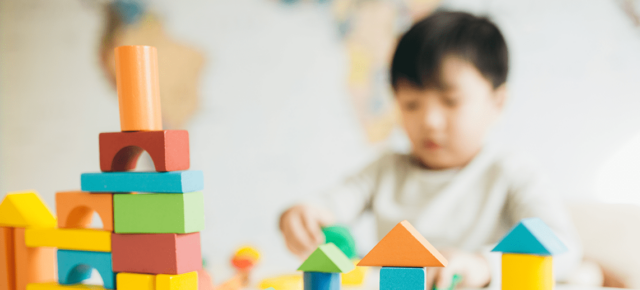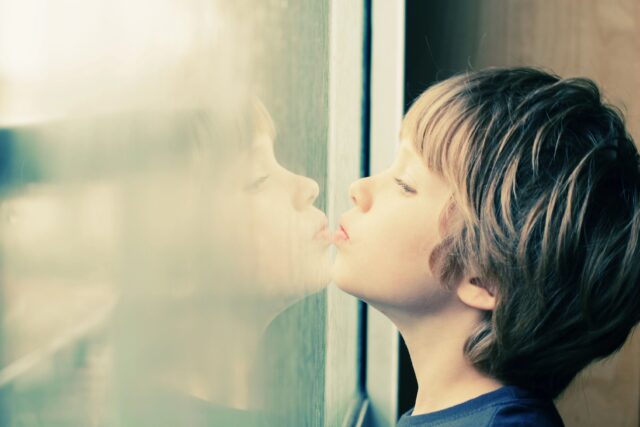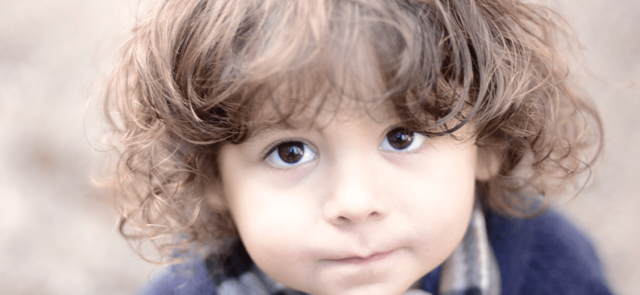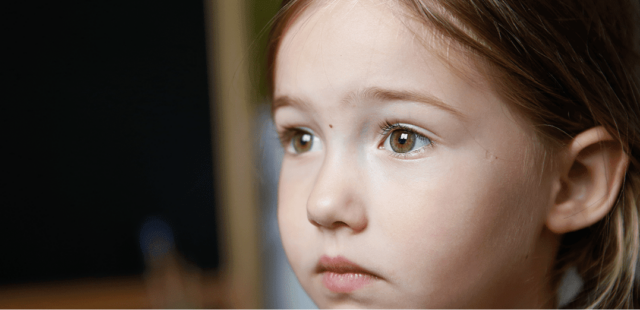Some people think that ABA therapy is not harmful because it can help kids with autism learn to communicate and give them more autonomy. Other people think that ABA therapy is harmful because it requires suppressing behaviors that are natural for people with autism.
The Controversy Around ABA
The Controversy Around ABA
Why some autism parents and advocates find fault with the therapy
Clinical Expert: Catherine Lord, PhD
en EspañolKey Takeaways
-
ABA helps autistic kids learn skills and reduce harmful behaviors, using reinforcement to encourage desired actions.
-
Critics argue ABA is too repetitive and focuses on eliminating behaviors, pushing kids to conform to neurotypical standards.
-
Supporters say modern ABA builds on strengths and the child’s natural interests, helping kids develop independence and participate in society without changing who they are.
Quick Read
Applied behavior analysis (ABA) is a therapy that helps kids with autism learn skills and lessen problematic behavior like hurting themselves. There are several different forms of ABA. All are based on the idea that reinforcing certain behaviors will lead kids to repeat those behaviors. Studies have shown that ABA is effective, but some parents and autistic self-advocates do not support its use.
One criticism of ABA is that the earliest version of it used punishments as well as rewards. Punishments are no longer used in ABA, but critics think it is still too hard on kids because it is so repetitive. Supporters argue that modern ABA is often much less repetitive and that practitioners are trained to make learning fun and interesting for the child.
Another criticism is that ABA is too focused on eliminating behaviors instead of building skills. Some practitioners agree that this can be a problem. They emphasize that therapy needs to focus on what kids should be doing, rather than what they shouldn’t be doing.
Finally, some autistic self-advocates say that ABA tries to make kids with autism fit neurotypical standards. They argue that autistic kids have different needs, so they shouldn’t be taught to look and act like neurotypical kids. Some of these advocates says that speech and language therapy is a more helpful way for autistic kids to build skills and independence.
Practitioners of ABA say that they don’t try to change the way neurodiverse kids think and feel. Instead, they say, the goal is to help kids build on their strengths and participate in society as much as possible.
Full Article
8 min read
Over the last few decades, Applied Behavior Analysis, or ABA, has grown into a broad group of approaches and techniques designed to help children with autism. Principles of behavioral therapy – positive reinforcement of desired behaviors — are used, usually intensively, to help autistic kids develop skills they’re not acquiring naturally and to reduce behaviors that are harmful to them, like self-injury. (Read about the different kinds of ABA here.)
But as ABA has expanded and become more common, it has also acquired critics among parents and autism advocates, who take issue with its methods and the way they are used by some practitioners.
One source of criticism stems from the fact that the earliest form of applied behavior analysis developed for autistic children by Dr. O. Ivaar Lovaas in the 1960s, called Discrete Trial Training (DTT), was not wholly based on positive reinforcement for desired behaviors. “Dr. Lovaas used principles of both positive reinforcement and punishment to reduce self-injurious behaviors in residential settings, treating severely impaired persons,” explains Susan Epstein, PhD, a clinical neuropsychologist. Use of aversive reinforcement methods, which included electric shocks, are not considered acceptable today.
Too tough on kids?
While use of aversive reinforcement is generally gone, there is still a complaint that ABA therapy, which can involve a lot of repetition, is tough on the children, and the skills they learn don’t necessarily generalize to other situations.
The stereotype is that the therapists are demanding taskmasters. But Catherine Lord, PhD, a pioneering autism researcher and clinician now at UCLA, notes that most therapists doing traditional ABA are trained to be super-animated and fun. “If anything,” she says, “they’re over the top. Sometimes you do see someone who is just humorless. But that’s just bad teaching, not ABA.”
And most ABA therapists and programs now don’t use the DTT format, where the child sits at the table, but are play-based. Sara Germansky, a board certified behavior analyst or BCBA — the highest certification given to those who are trained by the ABA professional organization — gives this example:
“I might set up something where we’re playing with cars, and if I’m working on colors with a kid I might have two cars in front of me — one that’s red and one that’s yellow. And he’ll say, ‘Can I have a car?’ And I’ll say ‘Oh, do you want the red car or the yellow car?’ And then he’ll have to expand his language by saying ‘I want the red car.’ And then I’ll say, ‘Which one’s red?’ And he’ll have to identify the color. So there are ways of manipulating the environment so that kids are more naturalistically learning these skills.”
And, she adds, kids are more able to generalize skills learned in a naturalistic situation beyond the therapy sessions and take them out into the world with them.
ABA is also almost never implemented 40 hours a week, as Dr. Lovaas first recommended. “Most kids are either given 10 hours a week or 20 hours a week,” says Germansky, who works with young kids on a one-on-one basis in New York City. “The more severe the behavior or delays the more hours they’re given. I will see kids usually every weekday for about two hours.”
Too focused on eliminating behaviors?
Another criticism of ABA stems from a failure of some practitioners to focus on development of skills along with trying to reduce or eliminate problem behaviors. Tameika Meadows, an Atlanta-based BCBA, says she sees this problem when she visits some schools to consult on the ABA procedures they are implementing.
One of the first things she notices, she says, is whether the focus is on getting rid of behaviors. “What are the students learning to do? What are they supposed to do instead of tantruming, or instead of trying to escape the building during the day?”
Ari Ne’eman, a leading autistic self-advocate, objects to ABA on the grounds that it focuses on making autistic people appear to be “indistinguishable from their peers” — an expression he draws from Dr. Lovaas. As such, he argues, it discourages behaviors without acknowledging their emotional content.
“The emphasis on things like eye contact or sitting still or not stimming” — i.e. self-stimulation such as flapping hands — “is oriented around trying to create the trappings of the typical child,” he says, “without acknowledging the reality that different children have different needs. It can be actively harmful when we teach people from a very early age that the way they act, the way they move is fundamentally wrong.”
Ne’eman, who is president and co-founder of the Autistic Self Advocacy Network, does not object to structured early intervention for autistic children, and he acknowledges that self-injurious behavior — one of the things ABA is designed to reduce — is a serious problem. But he argues that other structured interventions that are aimed at speech and language may be more valuable to the child, especially children who are nonverbal, for whom the behavior is a form of communication.
Because some states and insurance companies acknowledge and reimburse only ABA treatment, he says, some kids who would benefit from working with a speech-language pathologist, who might get them access to some other alternative form of communication, aren’t getting that attention. “We’re sometimes leaving children more controllable but worse off than they were before,” he argues.
Trying to eliminate differences?
Defenders of ABA argue that it isn’t aimed at taking away autistic children’s neurodiversity but at enabling independence.
“ABA is based on the premise of manipulating environmental variables to bring about behavior change,” Germansky says, “so we aren’t trying to change the person, we aren’t trying to change how they think, we aren’t trying to change how they feel.”
That’s the experience Stephanie Kenniburg has had with her son Holden, now 6, and his ABA therapy. “What I like is that they’re trying to help him live as independently as possible but they’re not trying to take his autism away,” she says. “Like there are certain parts of his autism — the way his brain works, the way he thinks — and they’re not looking at that as something negative that needs to go away. They’re looking at it as ‘this is how he thinks so this is how we’re going to teach him how to live in the world.’ ”
Kenniburg says the whole family has learned how to help Holden develop skills via ABA. “I like that they’ve accepted his neurodiversity and that they’ve accepted him as a person,” she says. “They’ve really helped us as a family teach him how to be more independent.”
Helping kids have more choices — and more joy
Dr. Lord acknowledges that ABA originally was focused on the goal that kids would fit a typical ideal. “ABA was created with a sort of model that there is a perfect way to be, and we know what that is and we’re going to teach you how to be that perfect way.”
But now the approach is much more individualized, she notes, though there are always goals. “One of the hard things of working with children is always that you do have to make assumptions of what is going to be best for this child.”
Dr. Lord agrees with Ari Ne’eman when he notes that the most important thing for a young child on the spectrum is that there is some intensive early intervention. For kids who are less severely impacted by their autism, Dr. Lord adds, it matters less whether the program is ABA or something else. But she says kids who are at risk of not being verbal have been shown to have a better chance of talking with ABA.
What a good therapist does, she says, whether it’s ABA or not ABA, is “try to figure out ways that build on an individual child’s strengths, that use their interests, but that allow them to participate in society and that will give them the most choices. That’s what we want. We don’t want just the best-behaved person, we want a person who can do as much as possible, and get as much joy as possible out of the world.”
Frequently Asked Questions
This article was last reviewed or updated on June 20, 2025.
Related Reading
-
 How to Know If You’re Getting Good ABA
Parents need to keep a close eye on programs, clinicians and children’s development
How to Know If You’re Getting Good ABA
Parents need to keep a close eye on programs, clinicians and children’s development
-
 What Is Applied Behavior Analysis (ABA)?
The most common therapy for autistic children now includes a range of different approaches. Here's…
What Is Applied Behavior Analysis (ABA)?
The most common therapy for autistic children now includes a range of different approaches. Here's…
-
 Helping Children With Autism Learn to Communicate
Being able to make themselves understood can reduce frustration and self-injury
Helping Children With Autism Learn to Communicate
Being able to make themselves understood can reduce frustration and self-injury
-
 Complete Guide to Autism
Autism spectrum disorder is called a spectrum because autistic kids may have a wide range…
Complete Guide to Autism
Autism spectrum disorder is called a spectrum because autistic kids may have a wide range…
-
 What Are PANDAS and PANS?
Sudden-onset OCD and other symptoms triggered by an infection
What Are PANDAS and PANS?
Sudden-onset OCD and other symptoms triggered by an infection
-
 Complete Guide to PANS and PANDAS
How to recognize these forms of severe, acute-onset OCD, how they are diagnosed, and the…
Complete Guide to PANS and PANDAS
How to recognize these forms of severe, acute-onset OCD, how they are diagnosed, and the…
-
 Quick Guide to Autism Spectrum Disorder
Autism spectrum disorder (ASD) is a neurodevelopmental disorder. It affects children in two big ways. First, it…
Quick Guide to Autism Spectrum Disorder
Autism spectrum disorder (ASD) is a neurodevelopmental disorder. It affects children in two big ways. First, it…
More Related




